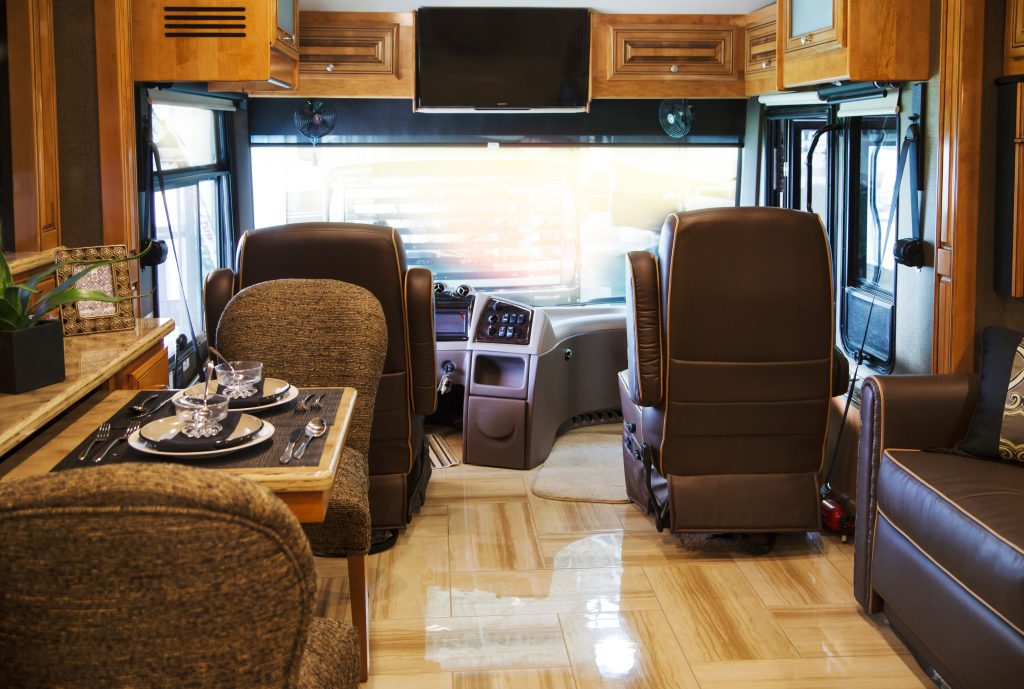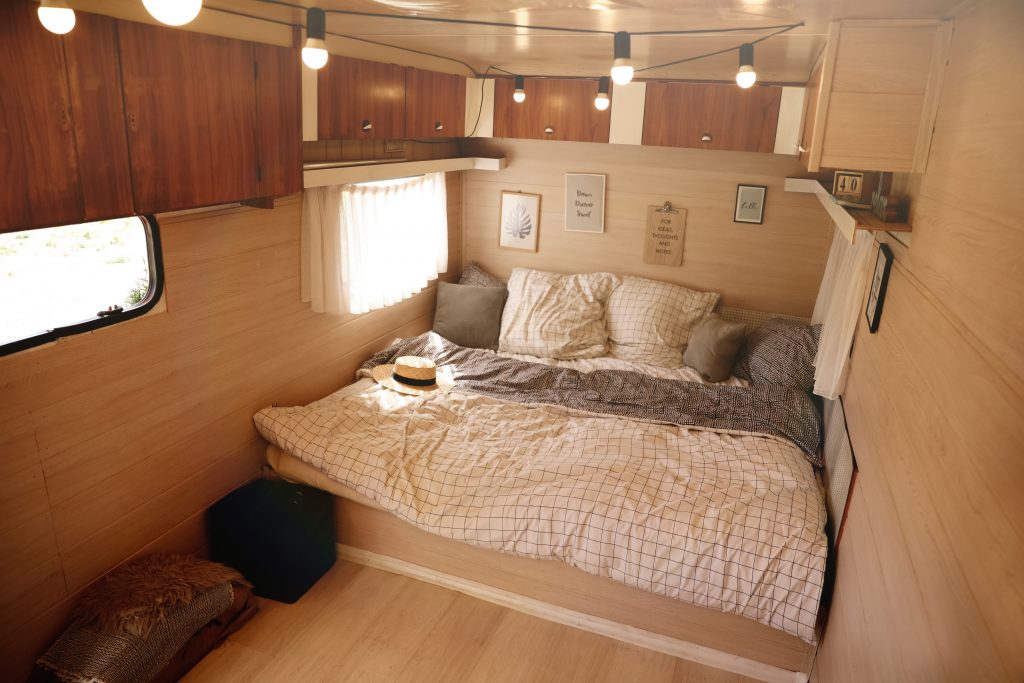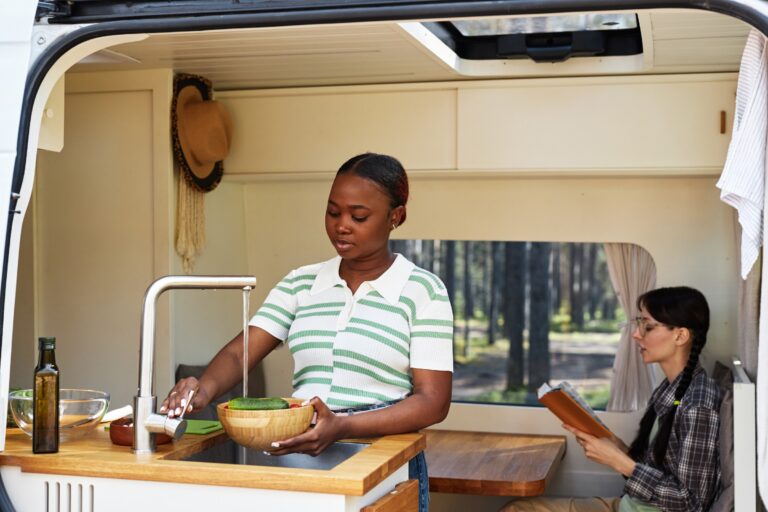Creating an Accessible RV: A Complete DIY Guide
The pursuit of adventure should not be hindered by limitations in mobility. Designing an accessible RV is a challenge that, when properly executed, opens up a world of exploration possibilities. With a commitment to inclusivity, we can transform RVs into not just comfortable homes-on-wheels, but also vehicles of liberation for wheelchair users and people with disabilities.
Innovative Mobility Solutions: The Core of Accessibility

Mobility is the cornerstone of any accessible design. When modifying an RV, it’s essential to consider features that will enable seamless movement for individuals with varied mobility needs.
Wheelchair Lifts
A critical feature of an accessible RV is a wheelchair lift. These devices allow wheelchair users to enter and exit the RV independently. There are numerous lifts available on the market. Some come equipped with compact designs for smaller RVs, while others have a high weight capacity to accommodate heavier wheelchairs.
Widening Doorways and Corridors
The standard door width in many RV models may not be sufficient for wheelchair users. Upgrading to wider doors can make a significant difference in accessibility. Similarly, increasing the width of internal corridors can improve maneuverability.
Adjustable Furniture and Fixtures
The inclusion of adjustable countertops and tables is another essential aspect of RV accessibility. These features should be adaptable to different heights to cater to wheelchair users. Lowered controls for lighting, heating, and other utilities are also critical for autonomous use.
Accessible Storage
Wheelchair users often struggle with storage in traditional RVs. By lowering and widening storage compartments, accessibility can be vastly improved.
Prioritizing the Bathroom Layout
When designing an accessible RV, the bathroom often poses the most significant challenge due to its limited space. However, with thoughtful planning, careful selection of fixtures, and innovative solutions, you can create a bathroom that is not just functional but comfortable and safe for individuals with disabilities.
Roll-In Showers
Roll-in showers are a must for an accessible bathroom design. They have a flat threshold, which allows individuals using a wheelchair to roll in and out of the shower with ease. Incorporating a built-in shower seat can also provide added comfort and safety.
In addition, consider using a handheld showerhead on an adjustable bar. This allows for easier control of the shower direction and height according to individual needs.
Adequate Space for Wheelchair Turning
A wheelchair-accessible bathroom should have enough floor space for a wheelchair to make a 180-degree turn. This requirement often means rethinking and reconfiguring the traditional bathroom layout. If space is tight, consider creative solutions like collapsible or pocket doors.
Toilet Design
An accessible toilet should be at a suitable height for easy transfer from a wheelchair. Grab bars should be installed around the toilet to provide support during transfers. Some individuals might benefit from a toilet with an integrated bidet, reducing the need for reaching and twisting.
Accessible Storage
Bathroom storage should be within easy reach from a seated position. This often means lowering the height of cabinets and using pull-out drawers or shelves. Towel racks and other fixtures should also be installed at a height that can be easily accessed from a wheelchair.
Safety Measures
Bathroom safety is paramount. Non-slip flooring can prevent falls, and installing grab bars can provide support where needed. Proper lighting is also essential, and switches should be reachable from a seated position.
Kitchen Modifications for Enhanced Comfort

Creating an accessible kitchen within an RV requires thoughtful design and a keen understanding of the individual’s needs. From countertop height and appliance accessibility to storage design and fixture selection, every detail contributes to an inclusive, functional, and enjoyable cooking space.
Lowered Countertops and Accessible Appliances
Countertop height is crucial for kitchen accessibility. For wheelchair users, a lower countertop can make food preparation tasks more manageable. Adjustable countertops, which can be raised or lowered, offer a flexible solution and can be adapted to the user’s requirements.
Accessible appliances are another major component of an inclusive kitchen. The refrigerator, oven, and microwave should be installed at a height that can be easily reached from a seated position. Some modern appliances feature pull-out shelves or side-opening doors, which can improve access for wheelchair users.
Accessible Sink Design
The sink is a frequently used area in the kitchen, and its design plays a critical role in accessibility. The sink should be shallow enough to allow a seated individual to reach the bottom comfortably. Moreover, it should be installed at a lower height with clear space underneath, so a wheelchair can fit, enabling closer access to the sink.
Additionally, consider installing a single-lever faucet or a touch-sensitive model. These are easier to operate than traditional twisting faucet handles.
Adjustable Shelves and Pull-Out Units
Kitchen storage should be designed to offer easy access to stored items. Adjustable shelving in overhead cabinets allows customization based on the individual’s reach. Lower cabinets can be fitted with pull-out units, making it easier to retrieve stored items without bending or reaching into the back of the cabinet.
Space for Maneuvering
Space planning is another crucial element in creating an accessible kitchen. There should be sufficient space for a wheelchair to turn around, typically a circle with a diameter of at least 1.5 meters.
Ensure that the kitchen floor is smooth and free from obstacles. Also, plan the kitchen layout so that the most frequently used areas – the sink, stove, and refrigerator – are within a short distance of each other.
Lever-Type Faucet Handles
Standard twisting faucet handles can be difficult for some individuals to operate. Lever-type handles, on the other hand, are easier to use and can significantly enhance the RV kitchen’s accessibility.
Safety Features
Lastly, don’t forget to include safety features in the kitchen. These can include fire extinguishers within reach, slip-resistant flooring, and safety switches on appliances. It’s also wise to ensure sharp corners are rounded off to prevent injuries.
Harnessing the Power of Technology
Technological advancements have made accessibility more achievable than ever.
Remote Control Features
Modern technology allows the control of various features within the RV remotely. From adjusting the lighting to controlling the temperature, these technological wonders can make the RV living experience
Automatic or Voice-Activated Systems
Automatic systems have been a game-changer in the field of accessible design. Doors can open at the touch of a button or a voice command, making ingress and egress simpler. Similarly, ramps can extend automatically, eliminating the need for manual labor.
Making the Bedroom More Accessible

The bedroom, a sanctuary within the RV, requires special consideration when it comes to creating a truly accessible space. It’s not just about ensuring comfort during sleep, but also about providing an environment where individuals can move and function with ease and autonomy.
Accessible Bed Design
Bed design is one of the first things to consider. The height of the bed can significantly affect the ease of transferring in and out of a wheelchair. A bed that’s too high can pose a challenge, while a bed that’s too low might not provide adequate clearance for a wheelchair underneath.
The ideal bed height can vary based on the wheelchair’s dimensions and the individual’s abilities, but a general rule of thumb is to align the top of the mattress with the seat of the wheelchair. This alignment allows for a smoother and safer transfer.
In terms of the bed itself, consider adjustable beds. They can be elevated or lowered as needed, offering added flexibility. Moreover, some models come with features that allow the head or foot of the bed to be raised, providing additional comfort and support.
Wardrobe Adaptations
Wardrobe design is another critical aspect of an accessible bedroom. Adjustable shelves allow for customization based on the individual’s reach. Pull-out units, particularly for lower shelves, can make accessing stored items easier.
Another feature to consider is the clothes rail height. A lowered clothes rail enables easier access for wheelchair users. In addition, some wardrobe designs feature pull-down rails, which can be pulled down to a reachable height and then easily pushed back up.
Circulation Space
Space for movement, or circulation space, is essential in an accessible bedroom. There should be ample space around the bed for easy wheelchair movement. This space is especially important on at least one side of the bed to facilitate easier transfers.
Consider the placement of furniture and other fixtures to avoid obstructing pathways. Keep the space as clutter-free as possible to ensure smooth and unrestricted movement.
Lighting and Control Placement
Lighting in the bedroom should be sufficient, and controls should be within easy reach from the bed. Consider installing bedside lamps with accessible switches, or use smart bulbs that can be controlled through a smartphone or a voice-activated device.
Wrapping Up
Crafting an accessible RV is a labor of love, requiring meticulous planning and a deep understanding of unique needs. With a focus on mobility solutions, bathroom layout, kitchen modifications, technology integrations, entertainment systems, and bedroom design, we can create a comfortable and inclusive space for wheelchair users and people with disabilities.
Remember that every individual’s requirements are unique, and customization should be based on personal needs. By taking the time to plan and execute these modifications, you can transform your RV into an empowering tool that brings the freedom and joy of the open road to everyone, regardless of their mobility.
Check out RVnGO’s selection of accessible RVs today!
